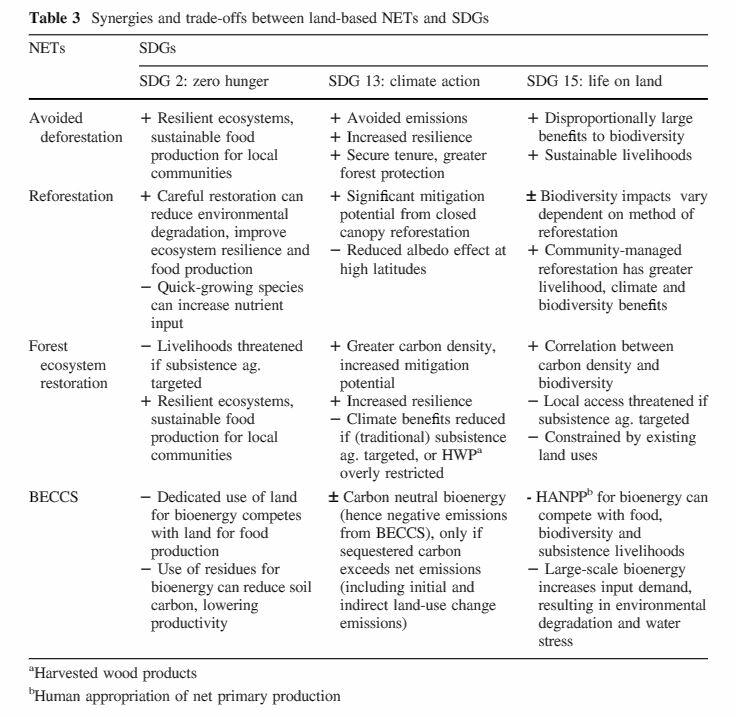Land-based negative emissions: risks for climate mitigation and impacts on sustainable development

Authors: Kate Dooley and Sivan Kartha
Abstract: This paper focuses on the risks associated with ‘‘negative emissions’’ technologies (NETs) for drawing carbon dioxide from the atmosphere through photosynthesis and storing it in land-based sinks or underground. Modelled mitigation pathways for 1.5 °C assume NETs that range as high as 1000 Gt CO2. We argue that this is two to three times greater than the amount of land-based NETs that can be realistically assumed, given critical social objectives and ecological constraints. Embarking on a pathway that assumes unrealistically large amounts of future NETs could lead society to set near-term targets that are too lenient and thus greatly overshoot the carbon budget, without a way to undo the damage. Pathways consistent with 1.5 °C that rely on smaller amounts of NETs, however,could prove viable. This paper presents a framework for assessing the risks associated with negative emissions in the context of equity and sustainable development. To do this, we identify three types of risks in counting on NETs: (1) that NETs will not ultimately prove feasible; (2) that their large-scale deployment involves unacceptable ecological and social impacts; and (3) that NETs prove less effective than hoped, due to irreversible climate impacts, or reversal of stored carbon. We highlight the technical issues that need to be resolved and—more importantly—the value judgements that need to be made, to identify the realistic potential for land-based NETs consistent with social and environmental goals. Given the critical normative issues at stake, these are decisions that should be made within an open, transparent, democratic process. As input, we offer here an indicative assessmentof the realistic potential for land-based NETs, based on a precautionary assessment of the risks to their future effectiveness and a provisional assessment of the extent to which they are in conflict with sustainable development goals related to land, food and climate.
Citation: Dooley, K. and Kartha, S. 2017. Land-based negative emissions: risks for climate mitigation and impacts on sustainable development. International Environmental Agreements. https://doi.org/10.1007/s10784-017-9382-9.